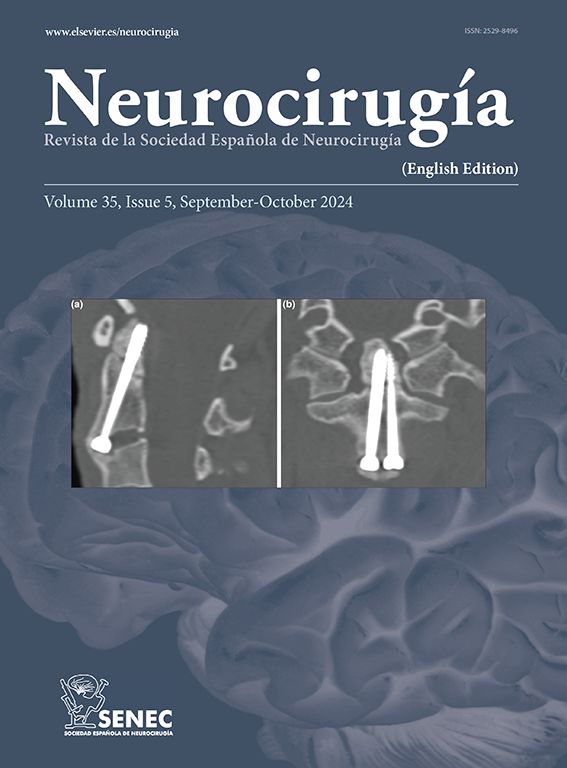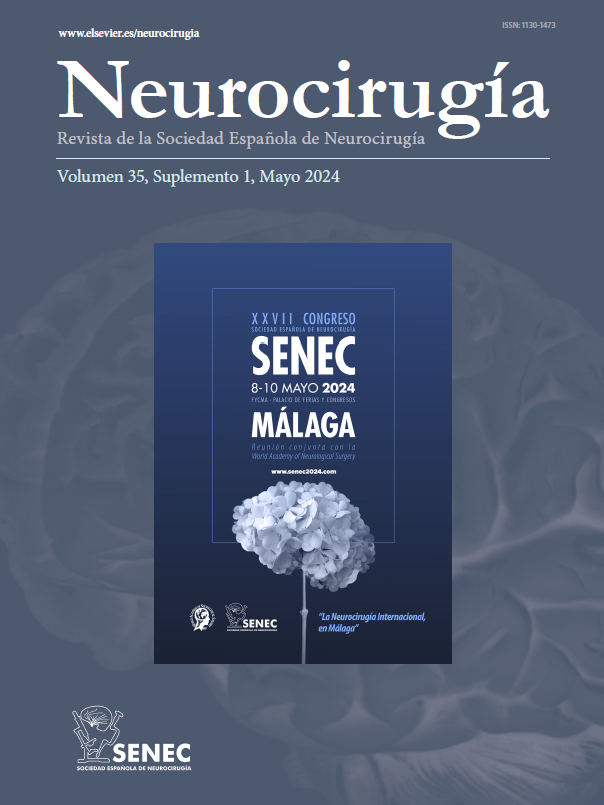Entre 1988 Y1997 hemos intervenido en nuestro servicio 31 pacientes portadores de meningiomas que afectaban la región del seno cavernoso (SC) y los hemos clasificado en intrínsecos, entendiendo por tales los originados dentro de los confines anatómicos del SC y en paracavernosos, cuando el SC estaba invadido por meningiomas originados en regiones anatómicas adyacentes. La serie está constituida por 11 pacientes con meningiomas intrínsecos y 20 meningiomas paracavernosos. Todos los pacientes fueron intervenidos mediante una craneotomía pterional asociada a una osteotomía orbitocigomática o frontoorbitaria; en nueve casos, las extensiones del tumor a la región petroclival obligaron a realizar un abordaje combinado supra-infratentorial. En los meningiomas intrínsecos se consiguió una resección completa en dos casos (18%), mejoraron un 50% de las neuropatías craneales y se presentaron un 45% de nuevas neuropatías. En los meningiomas paracavernosos las resecciones completas fueron posibles en 11 casos (55%), mejoraron un 42% de neuropatías craneales y se presentaron un 30% de nuevos déficits. Con un seguimiento entre uno y nueve años, cuatro pacientes presentaron progresión tumoral en focos de tumor residual y se identificaron un 7.5% de recidivas tumorales; ocho pacientes recibieron tratamiento complementario (4 radiocirugía estereotáxica).
Del análisis de los puntos de controversia alrededor de los meningiomas del seno cavernoso (definición, indicaciones y tipos de tratamiento, manejo de la carótida, pronóstico de los pares craneales, manejo de la recidiva y de la progresión tumoral) podemos concluir en base a nuestra experiencia y según la literatura disponible, que es preciso una definición homogénea de esta entidad MSC que permita el análisis y comparación de las series, así como el uso de un sistema estandarizado de recogida de resultados en particular respecto a la función de los pares craneales. El tratamiento debe establecerse de forma individualizada y en aquellos casos con clínica progresiva o signos de compresión cerebral, mediante cirugía radical excepto en casos de carótida englobada donde sería preferible la cirugía subtotal asociada a radiocirugía. Los periodos de seguimiento forzosamente cortos de las series radioquirúrgicas, no permiten concluir que la radiocirugía sea una terapia definitiva como primera forma de tratamiento en los MSC.
Between 1988 and 1997 a series of 31 patients harboring meningiomas involving the cavernous sinus (CS) region were managed at our unit. Cavernous sinus meningiomas CSM) were classified as intrinsic – those originated within the anatomical landmarks of the CS and paracavernous – those secondarily involving the CS from neighbouring areas-.Eleven patients had intrinsic lesions and 20 Tumors were classified as paracavernous. All patients were operated on by a pterional craniotomy with orbitozygomatic or orbitofrontal osteotomies; in addition, nine patients underwent a combined infra-supratentorial approach due to posterior fossa involvement. In the group of intrinsic meningiomas, total removal was acomplished in two cases (18%); 50% of cranial neuropathieS’improved and 45% of the patients developed new cranial nerve deficits. In patiens with paracavernous meningiomas, 11 total removals were performed (55%), 42% of cranial nerve deficits improved and 30% of new deficits were recorded. Through a follow-up between 1 to 9 years, four patients presented tumor progression and an additional 7.5% of tumor recurrences were identified. Eight patients underwent radiation therapy (4 of whom LINAC radiosurgery).
A clear definition of CSM, indications and types oftreatment, carotid artery management, prognosis for cranial nerves and management of tumor recurrences and progression are still controversial. From our results and the analysis of the literature we conclude that a clear definition of CSM is mandatory as well as a standard method to present the results of treatment particulary regarding cranial nerve function, in order to make the series comparable. Treatment should be stablished on an individualized basis. When progressive symptoms or brain compression appear, it seems better to perform radical microsurgery; however, when carotid artery is involved, subtotal removal and radiosurgery are preferred. Due to the short follow-up in radiosurgical series, the efficacy of radiosurgery as the primary treatment for CSM is unknown.
Article

If it is the first time you have accessed you can obtain your credentials by contacting Elsevier Spain in suscripciones@elsevier.com or by calling our Customer Service at902 88 87 40 if you are calling from Spain or at +34 932 418 800 (from 9 to 18h., GMT + 1) if you are calling outside of Spain.
If you already have your login data, please click here .
If you have forgotten your password you can you can recover it by clicking here and selecting the option ¿I have forgotten my password¿.






